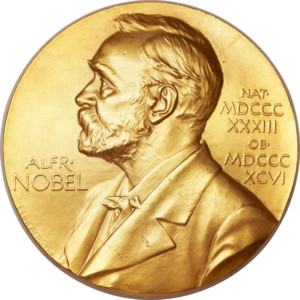By Emily E. Lewis for EDRblog.org.
 Complex situations call for creative solutions. Nowhere is this maxim more relevant than in addressing modern environmental problems. Finding and executing solutions that properly value and protect the natural world calls on leaders across disciplines to employ their knowledge in new ways. Using contracts as a means to collaboratively solve pressing environmental problems is a tool the legal community should keep sharp in their quiver.
Complex situations call for creative solutions. Nowhere is this maxim more relevant than in addressing modern environmental problems. Finding and executing solutions that properly value and protect the natural world calls on leaders across disciplines to employ their knowledge in new ways. Using contracts as a means to collaboratively solve pressing environmental problems is a tool the legal community should keep sharp in their quiver.
Most likely the first “legal” solution that comes to mind when addressing environmental issues are environmental laws that regulate the use of natural resources. For example, the United States has made vast gains in cleaning up its air and water through the provisions of the Clean Water Act and the Clean Air Act. Here, the law is employed through the use of government power exercising the traditional system of checks and balances. An elected legislature establishes the rules, the executive branch implements the rules, and when challenged, the court system determines compliance with the rules. Environmental regulations dictate the actions of numerous actors simultaneously, and are therefore very important and powerful tools for protecting the environment.
However, using this command and control technique is not without its drawbacks. For example, passing environmental regulations is a slow, expensive, and often contentious process. The parties most affected by proposed rules are typically one step removed from the process, relying on lobbyists, public interest groups, or lawyers to represent their interests. Administrative agencies are chronically underfunded, unable to fully enforce and monitor compliance with the laws. Additionally, once established, environmental regulations are rather inflexible to address changing environmental conditions.
Get notified when new articles are posted to the EDR blog – sign up for our email list »
Accordingly, to meet our environmental problems, there is a need for additional legal tools to complement our suite of environmental regulations. Recently, the Royal Swedish Academy of Sciences awarded Oliver Hart of Harvard University and Bengt Holmstrom of MIT, the 2016 Nobel Prize in Economic Sciences for their contributions to contract theory. Much of the new Laureates’ work focuses on contract design and how to craft contracts suitable to meeting real goals in real world settings. Paraphrasing, contracts should be more than a simple recording of an agreement, but be an instrument with stand-alone value in guiding, incentivizing, or informing the continuing interactions of the parties. For example, many contracts are “incomplete contracts” where articulating the parties’ exact actions to future eventualities is difficult. Instead of trying to design a contract to account for any number of potential outcomes, the contract should define decision-making powers in case the parties disagree. How decision-making is allocated therefore informs the relative bargaining powers and incentives for each party. Under this contract design, bestowing decision-making powers can also become an alternative to payment for performance.
The new Nobel Laureates’ collaborative and temporally flexible contract approach is well suited for parties looking to craft solutions and define rights in the face of ever-changing environmental problems. One area particularly well suited for implementing such contract tools is dictating water use between water users. Governed by the Prior Appropriation Doctrine, Utah water law contains several factors limiting flexibility: you must have a water right to use water; you must continuously use that water to maintain the validity of the right; the law only allows you to use water for very specific purposes; water rights are highly regulated and require administrative action to change any component; and water shortages are addressed by cutting off water use according to the date the water right was first put to use. While creating needed stability, the system is relatively inflexible and slow for adapting to contemporary demands.
To meet some of their water needs, water users in Utah have begun to employ many of the contract concepts discussed by Hart and Holmstrom, and are creating private water use agreements to dictate use among the parties. For example, in the 1990’s drought, combined with irrigation and power withdrawals from Bear Lake, lowered lake levels to an elevation impeding recreation. To avoid litigation, the primary Bear River irrigation companies, PacifiCorp, and recreation interests entered into a private settlement agreement. The irrigators and PacifiCorp voluntarily agreed that in times of drought they would proportionally reduce withdrawals according to decreasing lake levels instead of calling on their early priority rights and diverting large amounts of water at the expense of junior appropriators. Now invested in a more equitable apportionment of the loss, for over 20 years the stakeholders have met annually to promote water conservation among the parties and discuss issues of shared concern.
Collaborative contractual arrangements regarding water use are also becoming more prevalent to guide management of ground water resources. For example, in 2012 water users in the Beryl Enterprise area worked with the State Engineer to create a Beryl Enterprise Groundwater Management Plan. A key feature of this document, besides making an accounting of available water resources and setting safe yields for diversion, is the “Voluntary Arrangement” provision of the plan. Under these arrangements “water users may agree to participate in a voluntary arrangement to manage withdrawals based on a system other than priority.” The adopted plan establishes agreed-to amounts and timetables for reduction. If those reductions are met, the State Engineer will not order further reductions based on priority. In other words, if water users in the area band together and agree to each reduce their water usage, all users get to continue to use a substantial portion of their water instead of senior rights receiving all of their water right at the expense of junior users receiving none. While, additional agreements may be needed to implement these voluntary arrangements, the Groundwater Management Plan highlights some of the key concepts of the Nobel Laureates’ work, like defining decision-making powers at crucial junctures.
 As can be seen, Utah is already starting to use and explore many of the contract theories promoted by Hart and Holmstrom to address water management. As our water demands become more complex, future forward-thinking contracts may prove to be some of our most effective tools used to complement the State’s water law and solve some of our most entrenched water problems.
As can be seen, Utah is already starting to use and explore many of the contract theories promoted by Hart and Holmstrom to address water management. As our water demands become more complex, future forward-thinking contracts may prove to be some of our most effective tools used to complement the State’s water law and solve some of our most entrenched water problems.
Emily Lewis is lawyer at the law firm of Clyde Snow & Sessions. She primarily practices water law and assists clients with water due diligence work, administrative actions before the Utah State Engineer, water rights litigation, and general consulting in water matters. She is active on several water-related conference steering committees and organizations, and enjoys thinking about the nexus between law, natural resource use, and smart development. She is licensed in Utah and Wyoming.
